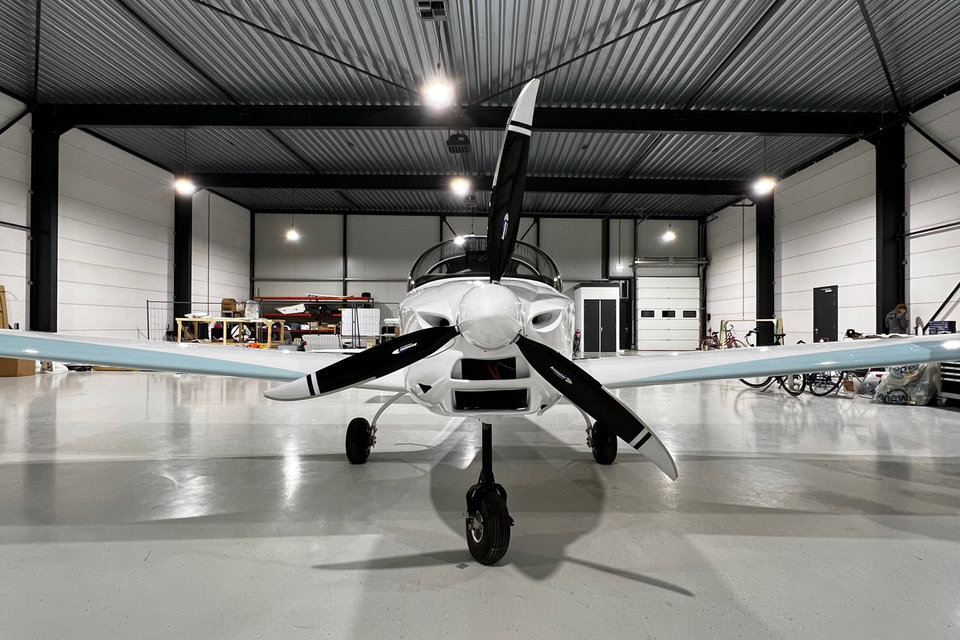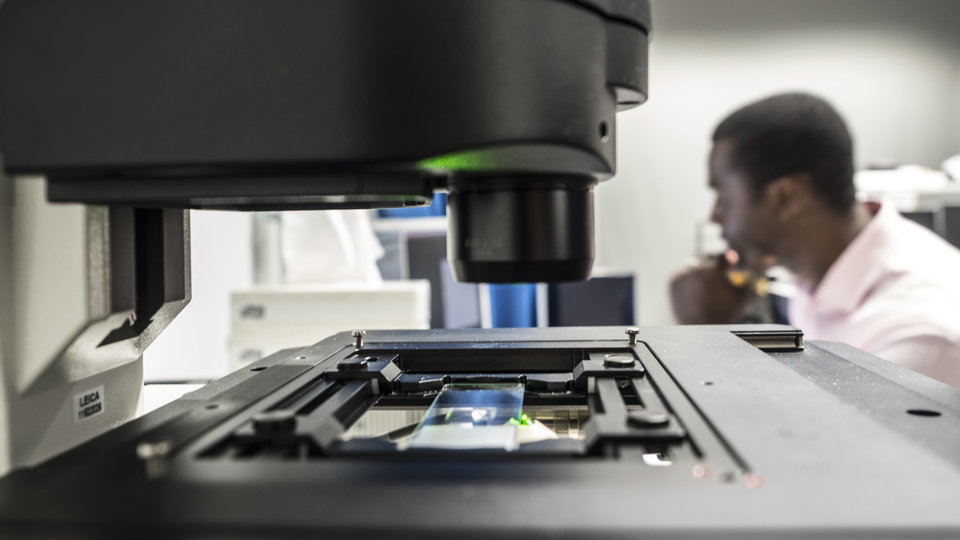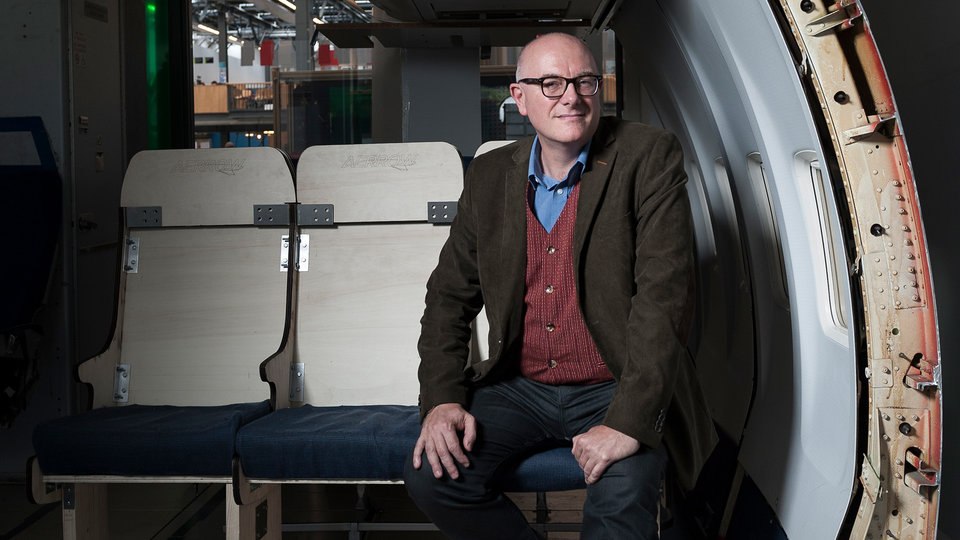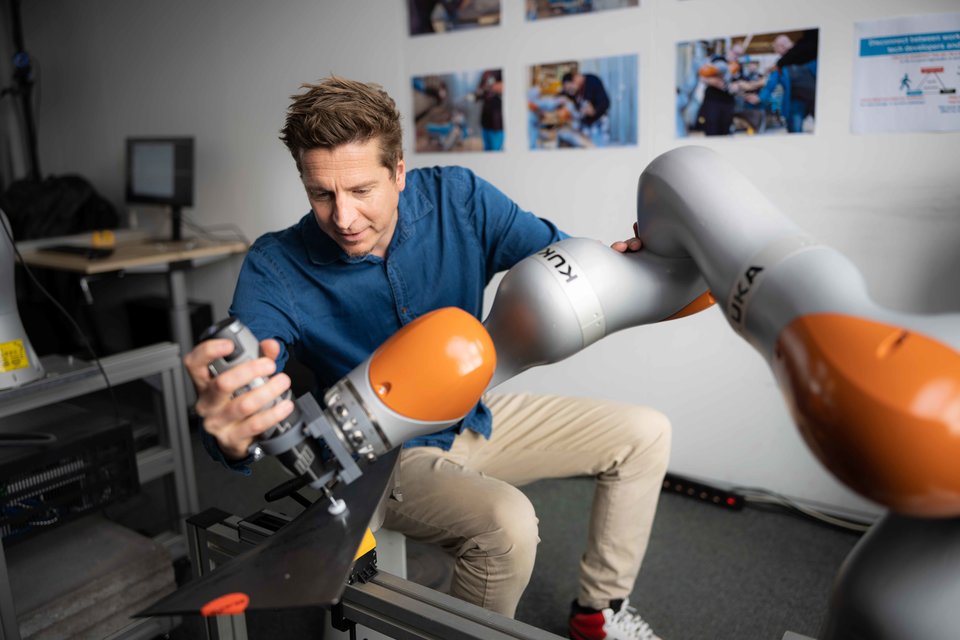EMERALDS: mobility management innovation through data science techniques
There is a huge wealth of data available about mobility in cities. But how do you unlock that data and extract information that solves your mobility problems? TU Delft is participating in EMERALDS together with the Rotterdam and The Hague local authorities and two startups. The new data science techniques emerging from this European research project are helping cities gain a clearer understanding of the issues and take anticipatory action.
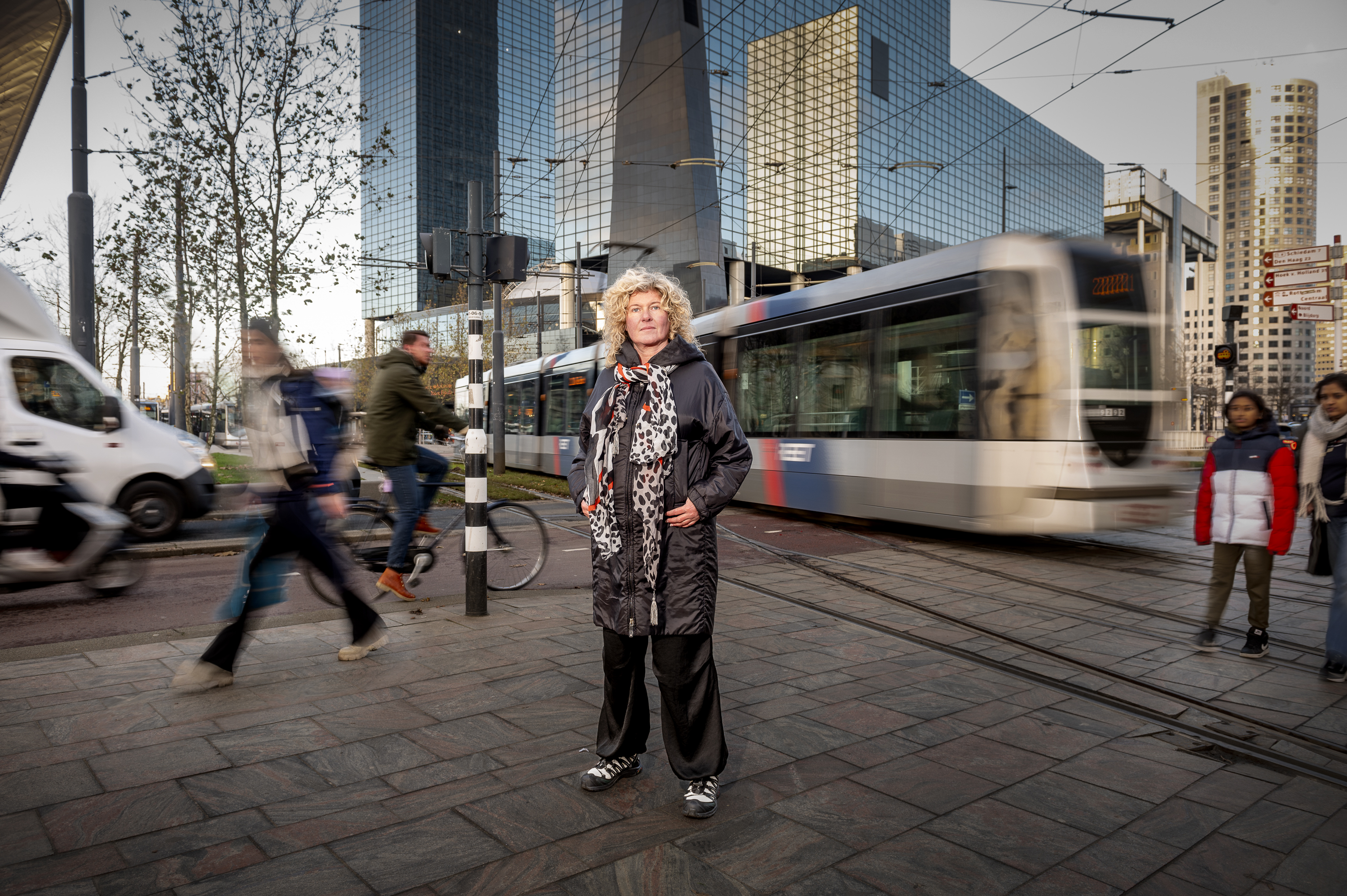
Erno Wientjes © Sascha Hoogendoorn Lanser
New data analytics services for governments
Traffic congestion, huge crowds, air pollution – mobility data can help solve problems of this kind. “But the more data Dutch government bodies and private parties have at their disposal, the more difficult it becomes to distil the right information from all those data sources,” says Sascha Hoogendoorn-Lanser, director of the Mobility Innovation Centre Delft (MICD). This partnership sees knowledge institutions (especially TU Delft), government bodies, and businesses join forces to initiate, accelerate, and support mobility innovations.
The MICD and the Transport & Planning Department of the Faculty of Civil Engineering and Geosciences at TU Delft are taking part in the Extreme-scale Urban Mobility Data Analytics as a Service (‘EMERALDS’) EU project. The aim of this three-year research project is to develop and experiment with new data science techniques that will give cities a better and earlier understanding of mobility problems. If local authorities have an early understanding of potential mobility problems, they can take measures to eliminate the causes of the problems or at least mitigate the consequences.
Systems that become smarter after every problem
The deployment of these techniques involves a starring role for self-learning AI systems. For the pilot in The Hague, for example, AI algorithms are being developed that predict congestion and resulting risks based on various data sources. Local authority and police employees can use the Crowd Safety Manager to view information on predicted crowds and risks. Every time measures are taken to reduce risks, the AI system learns from the effect of those measures. As a result, the predictions continuously become increasingly accurate.
Many different data sources, huge mountains of raw data, AI-based systems that need to be able to make sense of it at lightning speed – local governments face major challenges when it comes to mobility data. Thanks to the new techniques emerging from EMERALDS, they can use data more easily and make better automated decisions. This reduces congestion, accidents, and other problems, and means staff can be deployed more effectively at busy times.
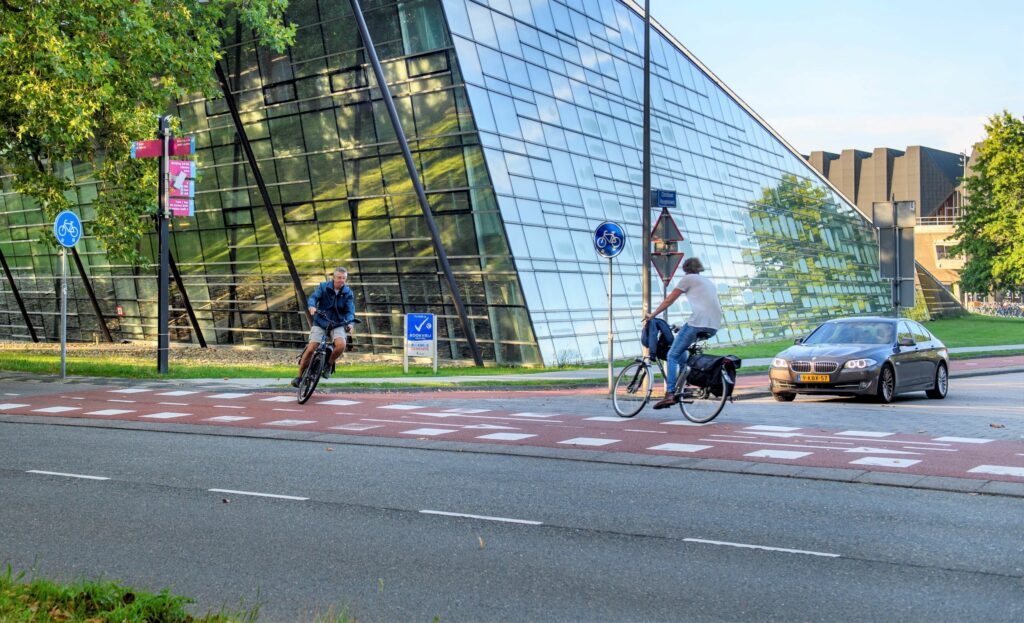
Triple helix of businesses, government bodies, and scientists
EMERALDS is being implemented by an international consortium of knowledge institutions, government bodies, and companies. In the Netherlands, it is the MICD that is in charge. Hoogendoorn-Lanser: "The MICD is a 'living lab', where we partner with government bodies and companies to develop, test and evaluate mobility innovations. Thanks to our large network, we are quickly able to find the most suitable parties, something that often makes us the preferred partner in consortia of this kind."
She believes the gap between data-science specialists and the specific mobility problems facing government bodies is too wide. "Because we work closely together within the government-business-science triangle, the data experts at TU Delft have one foot in the field. Moreover, the bulk of MICD projects are related to existing cases. Together with government bodies and companies - in this case the Hague, Roterdam and the Argaleo and Arane startups - we are making a concrete contribution towards sustainable, inclusive, future-proof and safe mobility systems."
Golden pilot cities
The MICD has two golden pilot cities in its remit, says the director. “The Netherlands is in any case one of the leading nations when it comes to mobility data. Moreover, The Hague and Rotterdam are cities with completely different issues: crowd management versus multimodal traffic management. They are totally committed and keen to learn from each other's insights. We are now also seeing interest from the G40 city network. It was not until 1 January 2023 that we launched EMERALDS, so it’s wonderful to see things moving along so quickly.”
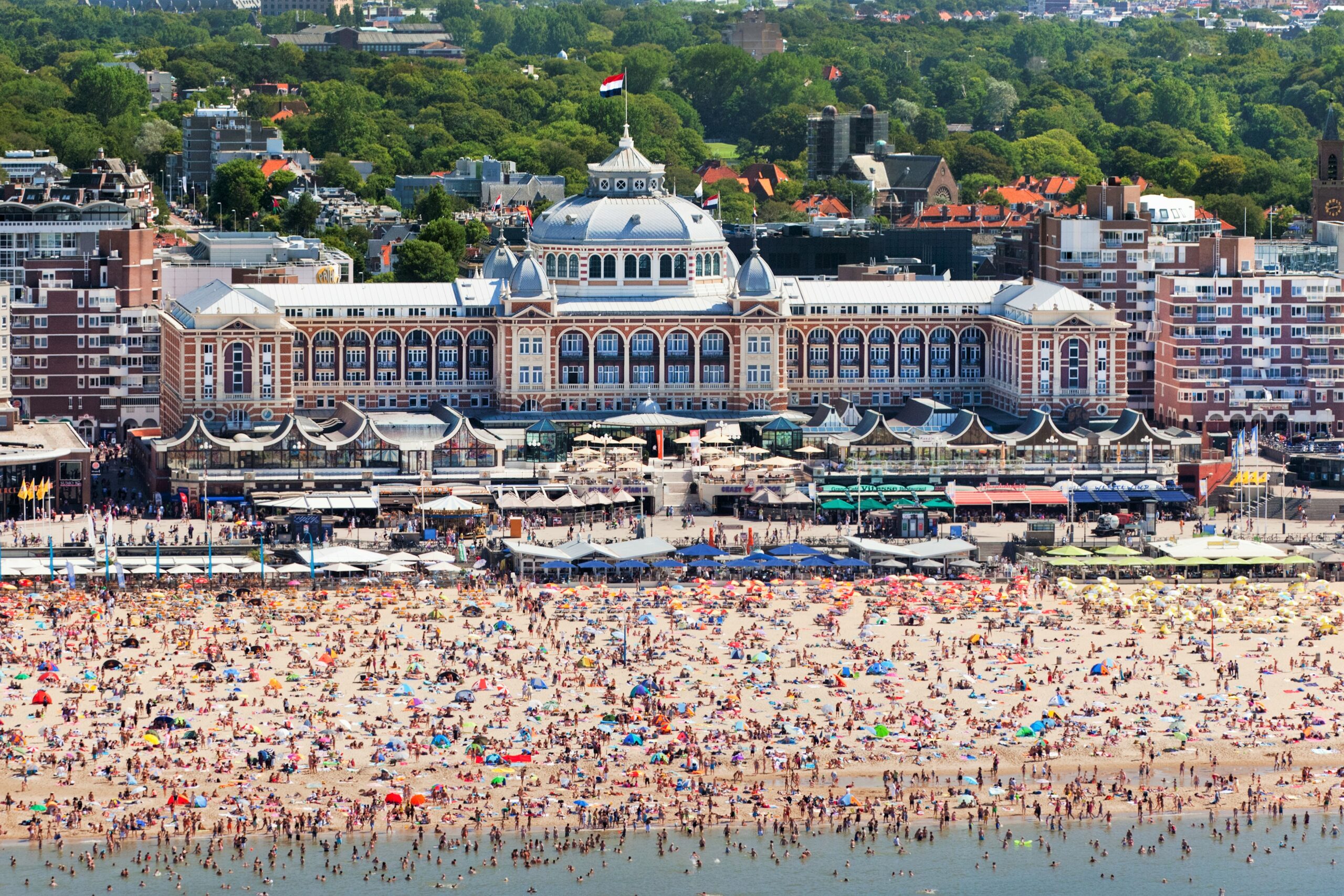
The Hague: responding quickly and anticipating crowds
The pilot in The Hague is all about crowd management. On hot days, problems regularly arise as a result of the huge crowds in Scheveningen. The pilot is focusing on crowds and risks alike; examples include the combined effects of the Sailing World Cup, shows and the large numbers of beach visitors.
Thanks to new data science techniques and previously unused data sources, it is now possible to make accurate predictions. For example, a ten-day crowd forecast is made during the summer holidays, based on scheduled events, historical crowd information, the type of day, the weather forecast, and other factors. This forecast enables the local authority and the police to more accurately estimate how many employees they need to plan for.
Using data on traffic flows, shared mobility, and car parks, as well as information such as social media messages, the system also predicts an hour ahead. The local authority and the police can use this forecast to deploy employees where they are most needed.
The data and information are displayed on the Crowd Safety Manager. This is a digital twin (that is, a virtual replica of the area) that displays information in a clear and uncomplicated manner on real-time conditions, the historical situation, and forecasts.
"Every organisation makes a unique contribution"
Carlien Roodink, manager of digital innovation and smart city at The Hague local authority: “The MICD developed the Crowd Safety Manager (CSM) with several other parties; it was tested in Scheveningen in 2022. In EMERALDS, we are moving it forward. We have been extremely impressed by the CSM. The people at the controls can acquire the information they need with just a few clicks. If future forecasts really are as accurate as we now expect, then we may expand it to the city centre.”
"We are very keen to work in these triangular partnerships. Whether it be the expertise of universities, the product and market knowledge of businesses, or our view of the city, each participating organisation makes a unique contribution to the whole.”
Rotterdam: one view of the mobility system
The Rotterdam local authority would like to use EMERALDS to gain more accurate and quicker information on the emergence of bottlenecks and to solve problems – actual and potential – both more smartly and more rapidly. One of the challenges is that the traffic network has different ‘modalities’, such as cars, cyclists, pedestrians, public transport, and shared mobility. Measures that benefit one group may have a negative effect on another.
The consortium is developing techniques that not only estimate current congestion in the traffic network, but also produce a short-term forecast. This will take account of all modalities. Based on the number of waiting road-users, for example, an algorithm calculates the overall predicted delay at a particular junction. The traffic management system can then use this information to take certain measures, such as extending the length of time traffic lights are green for a particular direction. Such minor measures are carried out automatically. They can prevent delays at a junction itself, but also at nearby junctions if they become blocked by queueing traffic. In the case of more major delays or incidents, decisions are taken by people.
These short-term forecasts are the holy grail of traffic management, especially if they cover an entire urban network, such as that of Rotterdam. The predictions mean the effect on different possible solutions can be determined almost in real time. To identify the best solution, the system looks at all the modalities and the effect of a particular measure on a larger part of the network.
Argaleo and Arane transform knowledge into products
In the triangle of science, business and government, it is mostly the businesses that develop products based on the knowledge gained before marketing and scaling them up as much as possible.
The MICD has involved two companies for EMERALDS. Arane is a multimodal traffic management advisor. And Argaleo's 3D digital twin (or virtual replica) of the cities is fed by all the raw data sources; after being analysed by the academic data models, the specific insights are displayed in the form of a map or graph, for example.
"Our goal: implementation by as many local authorities as possible"
Jeroen Steenbakkers, owner of Argaleo: “EMERALDS is an excellent extension of our R&D department; we are very closely involved with innovations that are still a long way from being available on the market. At the initial stage, we are mostly engaged with assisting decision-makers in the pilot cities. Later, we will look at how as many local authorities as possible can implement the system.”
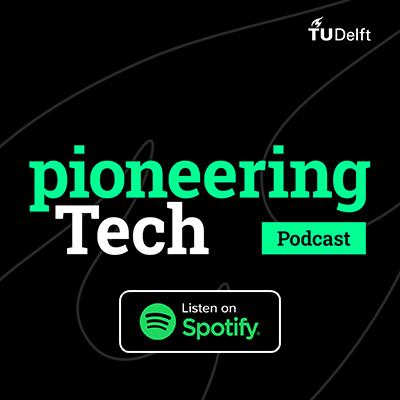
![[Translate to English:] [Translate to English:]](https://filelist.tudelft.nl/_processed_/e/0/csm_Cofounders-Meatable_Dumplings-full-res_bewerkt_resize_8300dcb64f.jpg)

